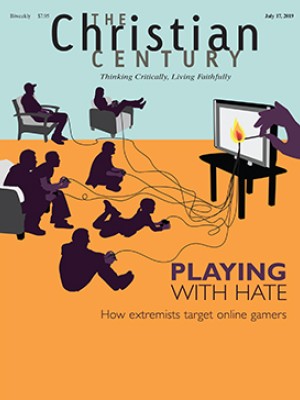Giving to religious groups down slightly, according to new report
One shift was a drop in number of people itemizing tax deductions, the Giving USA report on philanthropy noted.
Charitable donations to religious organizations decreased by 1.5 percent—almost 4 percent when adjusted for inflation—between 2017 and 2018, according to a newly released report.
Congregations and other religious groups received 29 percent of donated dollars during 2018, an estimated $124.52 billion, and the largest share of the total $427.71 billion given to charity. But that percent of total donations saw a slight decrease, too.
“This is the first time that giving to religion has fallen below 30 percent of overall giving,” states the Giving USA annual report on philanthropy, produced by the Indiana University Lilly Family School of Philanthropy, the Giving USA Foundation, and others.
Read our latest issue or browse back issues.
Giving to religion is defined in the report as giving to “congregations, missions, religious media, and other related organizations.” It does not include social service organizations such as the Salvation Army or seminaries and other religious schools.
The Giving USA report noted that giving to religion declined in 2018 after seven years of growing or remaining the same. At the same time, online giving to religious organizations “grew at more than twice the rate [of] overall change in online giving,” with an increase in the number of times online giving was mentioned during church services from 2015 to 2017.
Giving USA notes that charitable giving by individuals is often connected to disposable income, which was up 5 percent in 2018 from 2017. Yet individual giving was down by 1.1 percent, or 3.4 percent when adjusted for inflation.
“One important shift was the drop in the number of individuals and households who itemize various types of deductions on their tax returns,” the report states.
The Tax Cuts and Jobs Act passed by Congress in December 2017 raised the standard deduction for 2018 taxes to $12,000 for individuals and $24,000 for couples.
The Tax Foundation, an independent tax policy nonprofit founded in 1937, noted in a March report that “the value of deductions depends on the top tax rate a taxpayer pays. For example, a $1,000 deduction is worth $220 for someone in the 22 percent tax bracket. The same $1,000 deduction would be worth $370 to someone in the 37 percent bracket.”
The foundation and similar organizations estimated that fewer taxpayers will itemize their deductions, with the wealthiest taxpayers seeing the greatest benefit from itemizing.
After the law was enacted, fundraisers had mixed opinions. Tara Holley, then director of development for the Episcopal Church, told Episcopal News Service that she and her peers feared the new law would make nonprofits “more dependent on the wealthy than ever before.”
Others doubted that the tax savings from itemizing deductions were a substantial motivation to give.
The Giving USA report tracked trends in some mainline Protestant denominations. For example, in the Presbyterian Church U.S.A., per capita giving increased by 4.7 percent despite a decrease in membership. The Evangelical Lutheran Church in America and Episcopal Church saw smaller increases in giving (0.7 percent and 1.7 percent, respectively) from a smaller number of congregations and members. Authors of the report noted that the United Methodist Church may see a drop in giving in 2019 because of the vote on LGBTQ clergy and same-sex marriage in the denomination.
A version of this article appears in the print edition under the title “Giving to religion down slightly, report says.”





